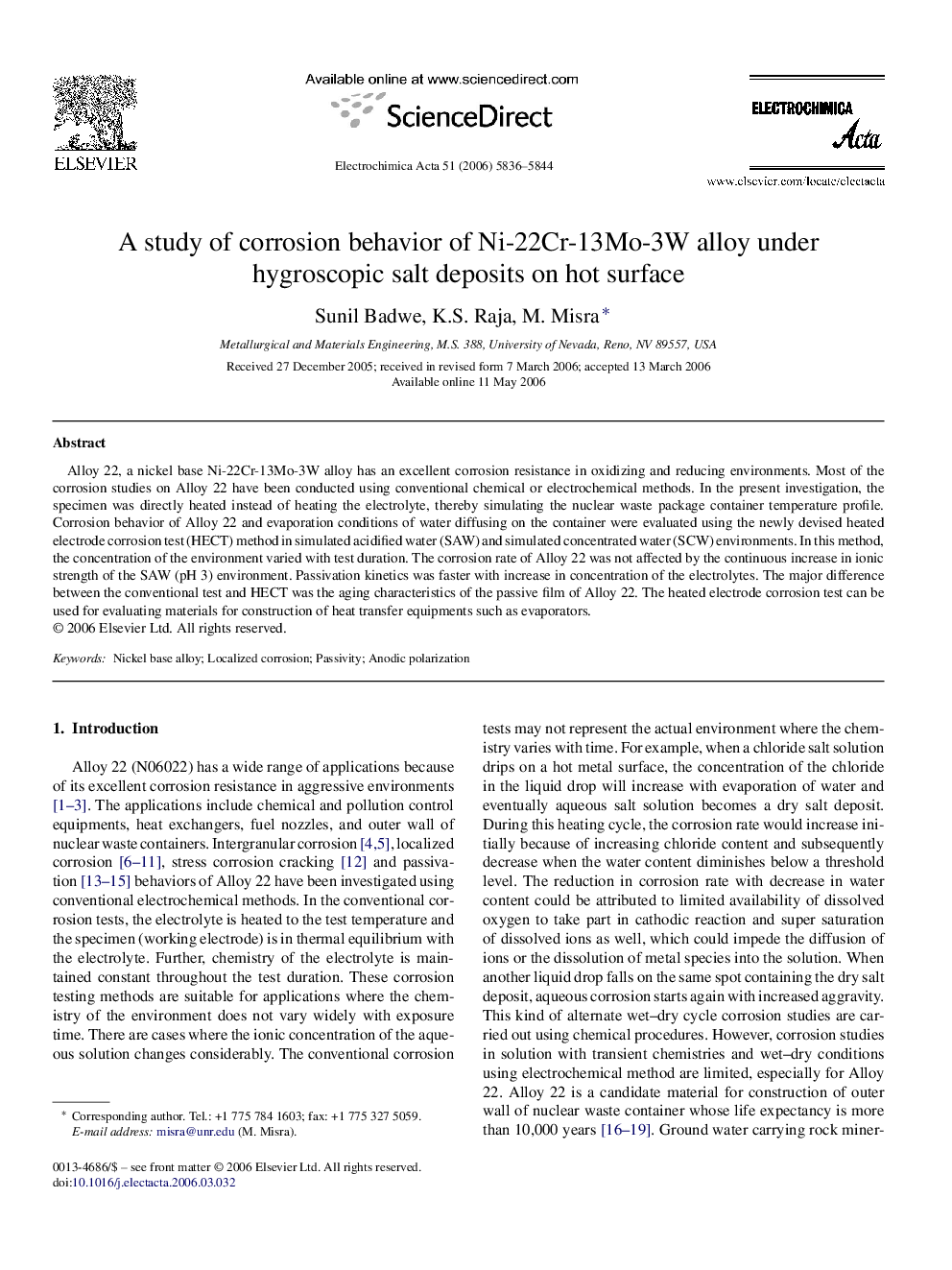| کد مقاله | کد نشریه | سال انتشار | مقاله انگلیسی | نسخه تمام متن |
|---|---|---|---|---|
| 194671 | 459797 | 2006 | 9 صفحه PDF | دانلود رایگان |

Alloy 22, a nickel base Ni-22Cr-13Mo-3W alloy has an excellent corrosion resistance in oxidizing and reducing environments. Most of the corrosion studies on Alloy 22 have been conducted using conventional chemical or electrochemical methods. In the present investigation, the specimen was directly heated instead of heating the electrolyte, thereby simulating the nuclear waste package container temperature profile. Corrosion behavior of Alloy 22 and evaporation conditions of water diffusing on the container were evaluated using the newly devised heated electrode corrosion test (HECT) method in simulated acidified water (SAW) and simulated concentrated water (SCW) environments. In this method, the concentration of the environment varied with test duration. The corrosion rate of Alloy 22 was not affected by the continuous increase in ionic strength of the SAW (pH 3) environment. Passivation kinetics was faster with increase in concentration of the electrolytes. The major difference between the conventional test and HECT was the aging characteristics of the passive film of Alloy 22. The heated electrode corrosion test can be used for evaluating materials for construction of heat transfer equipments such as evaporators.
Journal: Electrochimica Acta - Volume 51, Issue 26, 15 August 2006, Pages 5836–5844